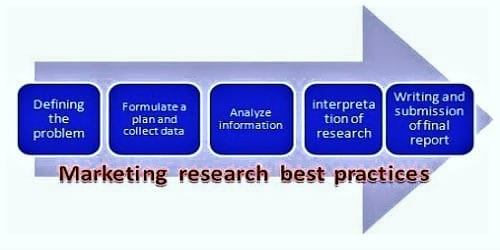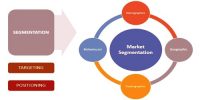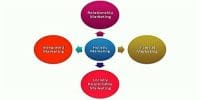Marketing research exercise may take many forms but a systematic inquiry is a feature common to all such forms. Being a systematic inquiry, it requires careful planning of the orderly investigation process.
Though it is not necessary that all research processes would invariably follow a given sequence, yet marketing research often follows a generalized pattern which can be broken down and studied as sequential stages.
The various stages or steps in the marketing research process are discussed below:
- Identification and Defining the Problem
The market research process begins with the identification “of a problem faced by the company. The clear-cut statement of the problem may not be possible at the very outset of the research process because often only the symptoms of the problems are apparent at that stage. Then, after some explanatory research, clear definition of the problem is of crucial importance in marketing research because such research is a costly process involving time, energy and money.
It may be noted that the methods of explanatory research popularly in use are a survey of secondary data, experience survey, or pilot studies, i.e., studies of a small initial sample. All this is also known as ‘preliminary investigation’.
- Statement of Research Objectives
After identifying and defining the problem with or without explanatory research, the researcher must take a formal statement of research objectives. Such objectives may be stated in qualitative or quantitative terms and expressed as research questions, statement or hypothesis. For example, the research objective, “To find out the extent to which sales promotion schemes affected the sales volume” is a research objective expressed as a statement.
Example of another hypothesis may be: “The new packaging pattern has resulted in an increase in sales and profits.” Once the objectives or the hypotheses are developed, the researcher is ready to choose the research design.
- Planning the Research Design or Designing the Research Study
After defining the research problem and deciding the objectives, the research design must be developed. A research design is a master plan specifying the procedure for collecting and analyzing the needed information. It represents a framework for the research plan of action.
The objectives of the study are included in the research design to ensure that the data collected are relevant to the objectives. At this stage, the researcher should also determine the type of sources of information needed, the data collection method (e.g., survey or interview), the sampling, methodology, and the timing and possible costs of research.
- Planning the Sample
Sampling involves procedures that use a small number of items or parts of the ‘population’ (total items) to make a conclusion regarding the ‘population’. Important questions in this regard are – who is to be sampled as a rightly representative lot Which is the target ‘population’? What should be the sample size—how large or ho” small? How to select the various units to make up the sample?
- Data Collection
The collection of data relates to the gathering of facts to be used in solving the problem. Hence, the methods of market research are essentially methods of data collection. Data can be secondary, i.e., collected from concerned reports, magazines and over periodicals, especially written articles, government publications, company publications, books, etc.
Data can be primary, i.e., collected from the original base through empirical research by means of various tools. There can be broadly two types of sources –
(i) Internal sources – existing within the firm itself, such as accounting data, salesmen’s, reports, etc. (ii) External sources – outside the firm.
- Data Processing and Analysis
Once data have been collected, these have to be converted into a format that will suggest answers to the initially identified and defined problem. Data processing begins with the editing of data and its coding. Editing involves inspecting the data-collection forms for omission, legibility, and consistency in classification. Before tabulation, responses need to be classified into meaningful categories.
The rules for categorizing, recording and transferring the data to ‘data storage media’ are called codes. This coding process facilitates manual or computer tabulation. If computer analysis is being used, the data can be keypunched and verified.
The appropriate analytical techniques chosen would depend upon informational requirements of the problem, characteristics of the research designs and the nature of the data gathered. The statistical analysis may range from simple immediate analysis to very complex multivariate analysis.
- Formulating Conclusion, Preparing and Presenting the Report
The final stage in the marketing research process is that of interpreting the information and drawing a conclusion for use in managerial decision. The research report should clearly and effectively communicate the research findings and need not include a complicated statement about the technical aspect of the study and research methods. Often the management is not interested in details of research design and statistical analysis, but instead, in the concrete findings of the research. If need be, the researcher may bring out his appropriate recommendations or suggestions in the Matter. Researchers must make the presentation technically accurate, understandable and useful.















